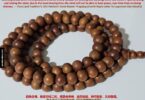Question: (Whether rightly done or not), if a dying person is already put on life support, how long should the person be on it, before there is enough offering of guidance and support-chanting to reach Pure Land?
Answer: The time is determined by when the person departs. What is enough is thus determined by the dying person, not anyone else. Even after death, unless there are clear auspicious signs, the person might just be deceased, with the consciousness yet to depart. Offering of guidance and support-chanting should continue seamlessly, aiming for eight hours. For the next 49 days, the following should continue regularly, especially on the seven seventh days: purelanders.com/wake.
Thus, there should be NO switching off of life support for the dying, which is in effect murder. For further explanation, on whether there should be putting on life support, see section [2] of https://purelanders.com/2015/12/30/important-guidelines-1-before-dying-pure-land-passport-section-4a, and the following on the brain dead, who are not yet definitely fully deceased, in terms of having the consciousness departed from the body: https://purelanders.com/2018/09/04/should-those-brain-dead-be-unplugged.
Question: Is it not so, that when taken off life support, one can still be alive, and find it easier to be mindful of Buddha, as there will be less suffering?
Answer: It is an illusion that one can be ‘let go off gently’ by flicking off a switch. For example, when a ventilator is switched off, the patient usually dies within minutes, due to inability to breathe well. (This is why it is in effect murder.) Although legal at this point, it is not moral in terms of the Buddha’s teachings. Long-drawn medical cost is often of concern, but sincere offering of guidance and support-chanting can expedite swift rebirth.
There might be pain or discomfort on life support, but there is usually more suffering when life support is taken off, even if it does not seem so, due to inability to convey this clearly. Such suffering might make it harder to be mindful of Buddha sincerely. Also, upon death, as above, it does not guarantee the person will connect to Buddha to depart by then, which means the person might be forced to enter the dangerous bardo state.
On discomfort, there should be repeated guidance to wholeheartedly be mindful of Buddha’s name; not being half-heartedly mindful, to thus be bothered by the discomfort. When there is wholehearted mindfulness of Buddha, the mind will have no space to be mindful of anything else, thus not being bothered by discomfort. With such mindfulness, there will be connection to Buddha’s blessings that relieve discomfort too. There can even be bliss experienced instead, which is why many depart smiling.
Question: If a dying person is on tube feeding, should it be removed, for there to be easier recitation of Buddha’s name?
Answer: There should be NO removal. As taught at https://purelanders.com/2015/12/30/the-third-great-essential-%e7%ac%ac%e4%b8%89%e5%a4%a7%e8%a6%81-pure-land-passport-section-3d, there should be NO touching or moving of the person, especially in the last stages of dying – or there will be magnified pain. (If there has to be some touching and moving, they have to be very gentle and minimised.)
There has to be assumption that the tube discomfort should be used to by then, and not be constantly fretted about. There should also be reminder to only be sincerely mindful of Buddha, instead of any discomfort. Discomfort should be seen as a reminder to be more sincerely mindful of Buddha.
Removal of feeding is starving, also a form of killing, just slower. (Some say death will take place between 9 to 14 days.) Even if there is no more point to feed, as the body cannot ingest and process food any more, the tube should not be removed for the reason above. As tube removal, like ventilator tube removal, involves some internal contact (and muscle spasm) on the way out, along with magnified pain, it can be very painful.
While it is natural to wish the dying patient to have more comfort, the above has to be carefully considered before tube removal and such, which might cause greater discomfort instead. One should also be reminded that putting up with relatively ‘slight’ discomfort for a while is for ensuring there is greater opportunity to have great bliss for immeasurable time, upon connection to Buddha. This opportunity to only focus on wholehearted mindfulness of Buddha should be cherished and not jeopardised. There should thus not be short-sightedness, to be ‘penny wise and pound foolish’, to possibly distract and disturb with great pain, just for short-lived relief from discomfort.
Mindfulness of Buddha does not have to be verbal. In these cases, for those very weak and close to death, it is very difficult for it to be verbal too. It should be guided to be done mentally, by listening to and following the Buddha’s name sincerely. There should not be pressurising of the person to chant aloud, as the inability to do so might cause loss of confidence in ability to connect to Buddha.
Related Articles:
Should We Opt In For AMD?
https://purelanders.com/2020/12/13/should-we-opt-in-for-amd
Should There Be Plugging In To Life Support?
https://purelanders.com/2020/12/09/should-there-be-plugging-in-to-life-support
Should Those ‘Brain Dead’ Be Unplugged?
https://purelanders.com/2018/09/04/should-those-brain-dead-be-unplugged
Section [2]: Considerations On Life Support & AMD
https://tinyurl.com/yc22uxdg
How To Urge Family Of Those On Life Support To Offer Guidance And Support-Chanting?
如何劝运用维持生命治疗者的家属开示助念?
https://purelanders.com/2021/04/20/how-to-urge-family-of-those-on-life-support-to-offer-guidance-and-support-chanting





